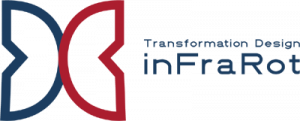My own experience with OKR
When we started with OKR, I was skeptical.
Another new wave? What a lot of effort! My attitude: I know what I have to do!
In the past, I sometimes caught myself losing focus. What was still an A priority in the course of permanent change and what had become even more important in the meantime? Because it wasn’t clear, I sometimes put off important tasks, blanked them out until they caught up with me.
And sometimes I asked myself, what is my colleague actually doing? He’s probably not doing anything useful. Or: Why isn’t the project moving forward? It was declared to be particularly important, and now no one is talking about it anymore. Is anything happening at all? And what is the management doing? What are they up to again in secret?
Today it’s different: Through our work with OKR, we talk about our goals for the next quarter in a structured process. We also talk about what we have achieved in the past 90 days. We make our goals transparent to everyone, just as the vision and our contribution to success are transparent to ourselves.
The goals and results of the decision-makers are also transparent. Thus, OKR are a contribution to more agility in the VUCA world and to a healthy corporate culture. Collaboration in a team with qualified feedback is not possible if I don’t know what the other person is doing. Communication is the be-all and end-all for joint success in a team.
Working with OKR is essential for successful change management. Which company is not in a permanent change in times of digitalization?
What are OKR?
The three letters in OKR stand for O = Objectives and KR = Key Results. As early as 1999, “Objectives and Key Results” were successfully used at Google. This made the OKR method well-known. Today, many companies around the world work with it. Every quarter, the company, the team and each person set individual goals and core results based on them.
How to work with OKR?
The implementation of OKR is a process that starts with a vision. Note: Doubling sales may be desired or even necessary, but it is not a vision. Employees want to follow a vision because it appeals to them personally and emotionally. Mere numbers do not provide this criterion. And a vision that is conceived by the management only has a chance if it corresponds to the corporate culture. This requires a practical check with the involvement of (ideally all) employees.
What are the benefits of OKR for me personally?
The framework becomes visible: My OKR goals are clear. I can measure myself by whether I meet expectations. I can also measure myself against them. This is an opportunity for introverts, whose accomplishments are sometimes not noticed enough.
Expectations are clearly stated. I’m no longer poking around in the fog about what I need to do in order to do a good job. I can “pat myself on the back” when I achieve my core results. This leads to greater satisfaction, health and resilience.
I see the big picture and not just many individual pieces of the puzzle. For complex operations or even an entire supply chain to function, it is important to see what the other person on the team is doing.
I develop understanding for the tasks of the others. This creates more connectedness in the team and I can better identify bottlenecks and work on them.
How do OKRs benefit the company?
OKRs provide orientation. Everyone knows what his or her contribution to success is.
Highest transparency: In some companies, everyone from the cleaning staff to the managing director can see what the goals and targeted results are.
Thinking outside the box: Only those who have access to information can think outside the box. Secret knowledge to maintain one’s own importance loses its relevance to the team development idea.
Why should we use OKR in the team?
Concentration on team goals: Everyone does what they want but no one does what they should? This is a thing of the past with OKR.
More communication in the team: in a structured process the team members learn what is important for the achievement of the team goals and for the company goals from and with each other. This creates trust and transparency.
A healthy working environment: where there is transparency, people talk to each other. The consequence of more communication is that solutions are sought in order to achieve goals together. With each other instead of against each other.
The OKR method is introduced and now difficulties arise in practical implementation?
After the implementation of the OKR method, it is essential that the company and each individual team set firm rules to which everyone adheres. This must be regularly reviewed within the team – especially at the beginning – so that the use of OKR offers a real opportunity. Otherwise, enthusiasm quickly wanes and the OKR method ends up in the pile of “We tried that once. Didn’t get us anywhere.” But once the OKR method is firmly established, companies continue to develop their own way over time, in line with the corporate culture.
When companies introduce the OKR method, it takes time to develop a common understanding of how it is used and the benefits. Employees often do what they are told because they are paid to do so. But if you don’t offer them a real benefit for doing something, you can’t expect intrinsic motivation, self-responsibility or even innovation.
At this point at the latest, is external support usually needed.
Why external support?
As always in change management, i.e. in all change processes, invented does not yet mean tried, and tried does not yet mean firmly integrated into the daily work routine. When the first difficulties arise, we tend to resume the old behavior. This has somehow worked so far. Maybe not well, but it is a tried and tested way. New territory is always scary and uncomfortable. The initial enthusiasm quickly gives way to the “valley of tears”. The key is to make successes visible and tangible, and to develop solutions for difficulties in practical implementation as a team. But if you sit in the bottle, you can’t read the label. Only someone from the outside can do that.
Furthermore: If OKR are simply “piled on top” and tasks and not neatly aligned, this creates chaos and despair in companies in our VUCA times or the OKR concept can develop into a bureaucratic monster. One of the tasks of external consultants is to ensure that the benefits and successes of the OKR method always remain visible in the company.
Do I have to use OKR in the whole company?
No, you do not have to. You can also start with one area, one business unit or one team. Many companies start with HR/People & Culture or in IT. As always, there are advantages and disadvantages to starting with sub-areas. An isolated solution can be a good thing for practicing and troubleshooting. It just takes longer and sometimes remains an isolated solution.
What are the key terms of the OKR method?
The basic terms are Objectives, Key-Results, Targets (the vision/overarching goal), Activities (how to achieve the result), Measurable, Framework (framework for cooperation). There are also various terms, such as the OKR cycle with OKR Review, Retrospective, OKR Planning and Weekly. The Mission Statement (description of the vision), Moals (Mid-Therm-Goals), OKR Planning and many more, which are also used and “lived” differently from company to company, depending on who introduces the OKR method.
When will we be done with OKR?
An honest word: never. OKR implementation is a holistic, longer process. This process must be followed up to be effective in the long term. And finally, the OKR process must be reviewed and adjusted again and again. If the company is not ready for this, OKR should not be started. OKRs are not a quick & dirty method, but a holistic new understanding of agile leadership and collaboration.



 © pathdoc / stock.adobe.com
© pathdoc / stock.adobe.com
Hinterlasse einen Kommentar
An der Diskussion beteiligen?Hinterlasse uns deinen Kommentar!